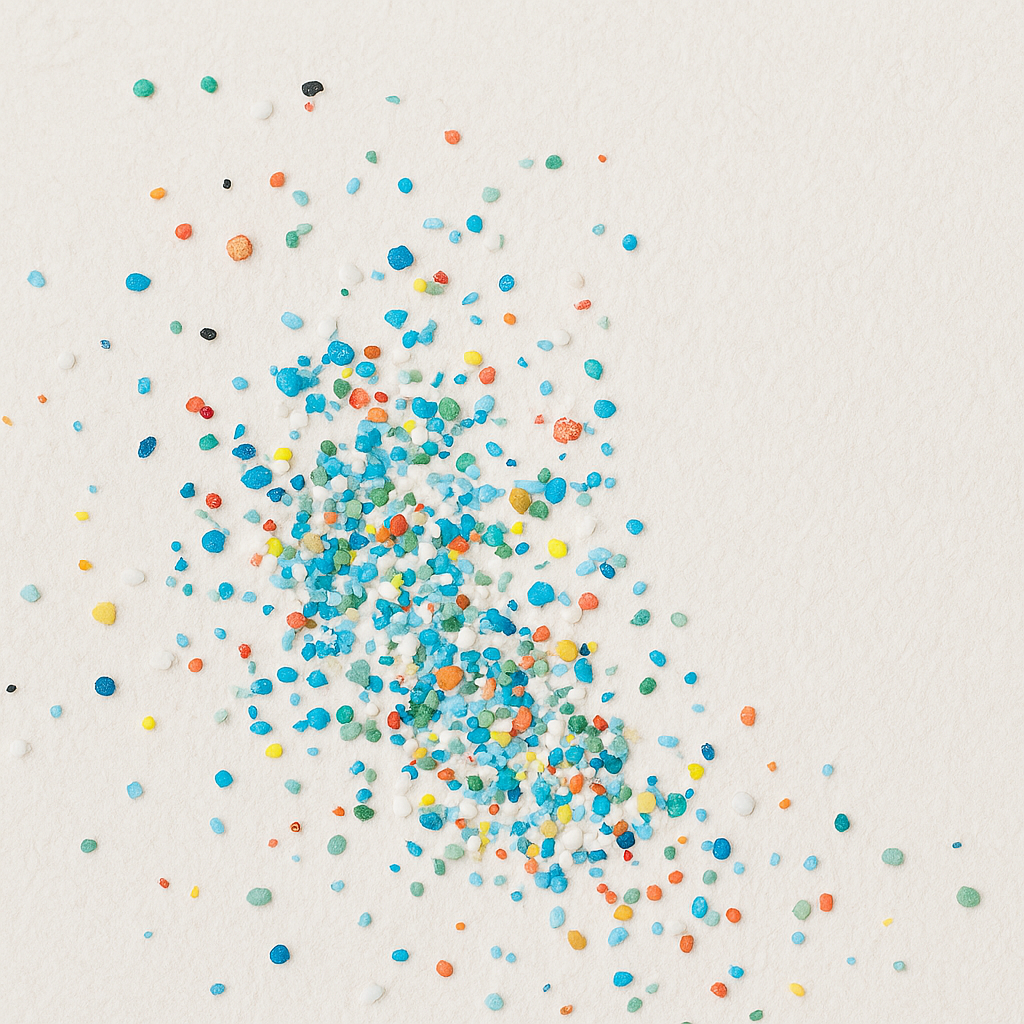
The Hidden Dangers of Microplastics: Why You Should Care
Share
In recent years, microplastics have become a growing concern for scientists, environmentalists, and health-conscious individuals. These tiny plastic particles, measuring less than five millimeters in size, are now found everywhere—from the deepest ocean trenches to the food we eat and the air we breathe. While their presence is undeniable, their impact on human health and the environment remains a critical issue that needs urgent attention.
What Are Microplastics?
Microplastics are small plastic fragments that result from the breakdown of larger plastic items or are intentionally produced for use in products like cosmetics, clothing, and packaging. They fall into two categories:
- Primary microplastics: Tiny plastic beads and fibers manufactured for use in personal care products, synthetic textiles, and industrial processes.
- Secondary microplastics: These originate from the degradation of larger plastic waste due to UV exposure, weathering, and mechanical breakdown.
Where Are Microplastics Found?
Microplastics have infiltrated every aspect of our daily lives, often without us realizing it. Studies have detected them in:
- Drinking water (both tap and bottled)
- Food sources (especially seafood, salt, honey, and even vegetables)
- Household dust (airborne particles that settle on surfaces)
- Personal care products (exfoliating scrubs, toothpaste, and cosmetics)
- Clothing (synthetic fabrics like polyester shed microfibers during washing)
Health Risks of Microplastic Exposure
While research is still evolving, early findings suggest that microplastics pose several potential health risks:
- Toxic Chemical Exposure – Plastics contain harmful additives like BPA, phthalates, and flame retardants, which can leach into our bodies and disrupt hormones.
- Inflammation and Cellular Damage – Studies suggest that ingesting or inhaling microplastics may cause inflammation, oxidative stress, and even damage to cells.
- Gut Microbiome Disruption – Consuming microplastics could interfere with beneficial gut bacteria, leading to digestive and metabolic disorders.
- Bioaccumulation – Over time, microplastics and their associated toxins may accumulate in organs, potentially contributing to long-term health problems such as cancer or reproductive issues.
Environmental Impact of Microplastics
Microplastics do not just affect human health; they are wreaking havoc on the environment as well:
- Marine Pollution: Millions of marine creatures mistakenly consume microplastics, leading to malnutrition, poisoning, and ecosystem disruptions.
- Soil Contamination: Agricultural lands are increasingly polluted with plastic debris from fertilizers, packaging, and wastewater sludge, affecting soil health and crop safety.
- Water Quality Issues: Microplastics absorb pollutants like heavy metals and pesticides, making clean water even harder to obtain.
How to Reduce Microplastic Exposure
Although microplastics are pervasive, there are ways to limit exposure and contribute to reducing their impact:
- Use reusable, plastic-free alternatives (e.g., glass, stainless steel, and ceramic containers)
- Choose natural fiber clothing (like cotton, wool, and hemp) over synthetic fabrics
- Filter your water using advanced filtration systems like reverse osmosis
- Avoid products with microbeads by checking ingredient labels for terms like polyethylene (PE) or polypropylene (PP)
- Reduce plastic waste by supporting companies that use biodegradable or sustainable materials
Conclusion
Microplastics are an invisible yet dangerous pollutant infiltrating our bodies and the environment. While more research is needed to fully understand their long-term effects, current evidence suggests that taking steps to reduce exposure and advocate for policy changes can help protect both human health and the planet. By making conscious choices in our daily lives, we can work towards a cleaner, plastic-free future.
Want to take a stand against microplastic exposure? Start by making small, impactful changes—like switching to reusable coffee lids made from safe, non-toxic materials. Every choice matters!
